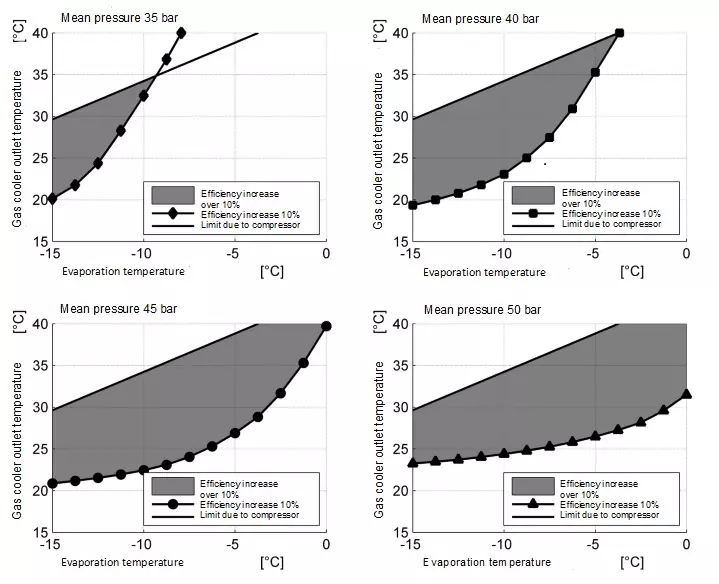Project example: Parallel Compressor
Increasing efficiency of CO2 refrigeration plants with parallel compressors
Cooling units are power consumers dominating around the clock and are becoming a focus of measures to increase efficiency. Energy efficiency can be improved through innovative control systems and by utilising the generated waste heat.
At the same time domestic and European lawmakers are successively restricting the use of refrigerants which are harmful to the environment.
Natural refrigerants such as ammonia, carbon dioxide or propane are an alternative. Due to restrictions on toxic or explosive substances, ammonia and propane are only an option for particularly large (ammonia) or particularly small systems (propane). Carbon dioxide (CO2) is an option for a number of applications since it does not pose a problem with respect to safety requirements.
Transcritical CO2 cooling units in particular typically use two-stage pressure reduction, i.e. an intermediate pressure stage. The flash-gas produced when reducing the intermediate pressure cannot be used for cooling. This is again reduced in a separate flash-gas line, injected into the intake line and condensed.
A control system with parallel compressor, on the other hand, diverts the flash-gas and condenses it to the gas cooler pressure using a separate compressor. This reduces the technical work for condensing the flash gas. Refrigerant compressors are furthermore more efficient at low pressure ratios.
The additional parallel compressor means larger investments into cooling units, which then need to be compensated with lower energy costs. The increase in efficiency to be expected by using a parallel compressor also needs to be known when designing the cooling unit.
Implementation and Result
The energy efficiency of a conventional cooling unit and a cooling unit with parallel compressor were examined experimentally subject to the key factors. The results correspond with the calculations of a proprietary simulation model which allows for further parameter studies based on numerical modelling.
This work demonstrates under which operating conditions the parallel compressor will increase efficiency by at least 10 %. In this case we can assume the slightly more expensive cooling unit will have a positive effect on profitability.
The maximum increases in efficiency by using the parallel compressor was also determined in line with this study. These occur under marginal conditions with unfavourable operation of the two control systems and, based on the low energy efficiency ratio of the parallel compressor, continues to gain compared to flash-gas injection. Maximum efficiency increases are therefore not pointed out and instead the minimum required for efficient operation is stressed.
The machine analysis of the parallel compressor was able to prove improved performance, establishing the decision-making basis for practical application. This contributed to improving energy efficiency in refrigeration.
